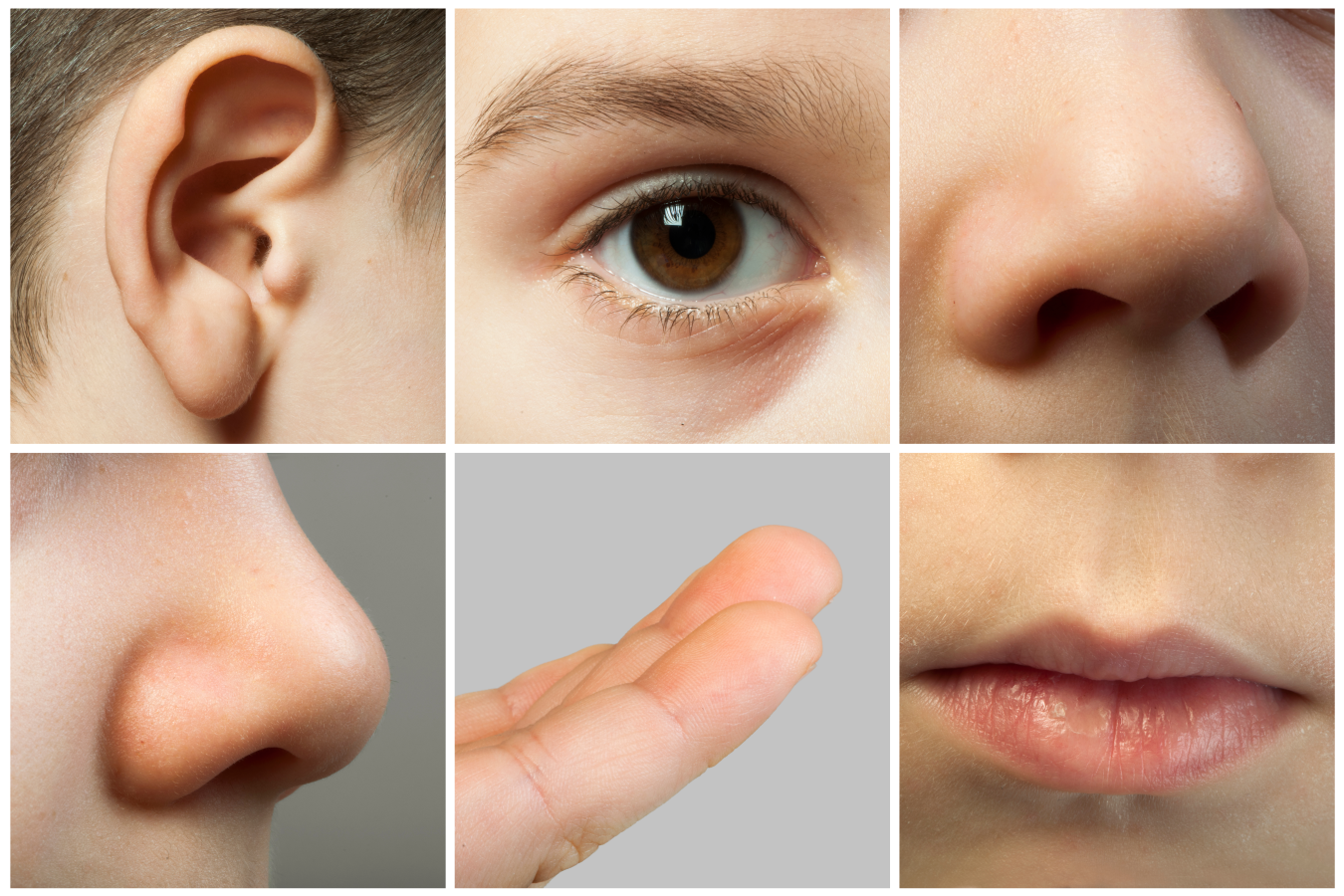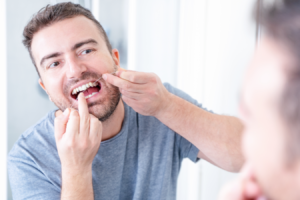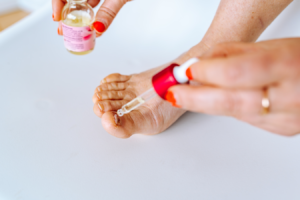How many times a day do we not perceive sounds, smells, or shapes? How many textures are touched during everyday activities? These actions, which usually go unnoticed, respond to the faculties that the five human senses give us to understand our existence.
Neurologist Francisco Aguilar says that the senses enable people to understand their surroundings. “They give us the primary information with which we discern everything,” he says.
He explains that touch, hearing, smell, taste, and vision depend on primary receptors that are perceived and processed by the brain in its cortex. Each sense has a “primary receptor” that relays in the nervous system and is integrated into the so-called “association areas.”
Aguilar points out that the stimuli make stops in relay nuclei until they reach the cerebral cortex. For the brain to capture the sensations, only a few thousandths of a second pass.
The operation occurs throughout life, but as time passes, the degrees of association with which the brain relates things can change, says the neurologist. This can lead to sensory deprivation or, in other words, the loss of a sense; something that usually occurs in older people, says Aguilar.

Deprivation reduces people’s abilities, but when a sense is no longer perceived, other brain areas may compensate for that function. An example of this is when people who lose their sight manage to develop touch and hearing, explains Aguilar.
The neurologist infers that beyond being ways with which we can perceive the world, the senses are small great dynamics that enrich human existence and that must be taken care of. Below, we tell you what their importance is and how they can be taken care of.
Touch
Thanks to the skin, the largest organ in humans, touch is one of the most stimulated senses thanks to the cutaneous receptors that make it up. Touch begins to develop from the gestation of the fetus and is present throughout life, says Nora Coloma, physical and occupational therapist.
Touch allows humans to perceive both external and internal sensations. The specialist points out that its functioning begins to occur from the time babies receive early stimulation.
The physical and occupational therapist talks about cases in which children can be born with touch problems. This could occur due to injuries during the development of the fetus, infections suffered by the mother, some syndrome, or genetic inheritance, she explains.
The specialist points out that, when altered, touch could manifest itself through two anomalies throughout growth. It could be through hypo-response in terms of the application of textures on the skin, which does not generate an immediate stimulus or reaction. On the other hand, hyper-response generates great reactions with minimal contact or gentle stimulation.

In these cases, and others in which touch is altered by illness or accidents – for example, cerebrovascular accidents – the sense can be strengthened through sensory integration therapy, which consists of applying tactile stimuli.
Norma points out that, regardless of the effects that may arise, touch remains stimulated daily since “we are a sensory integration.”
One way to be aware of the sense and give it greater importance can be through the recognition of everything that is touched or felt with the skin, paying attention to the textures, temperature, pain, and pressure. These nerve endings will give information to the central nervous system about the environment.
Hearing
If there is one way in which people can communicate with the world, it is largely due to hearing. Otorhinolaryngologist Lupemaría Dávila de la Parra points out that this sense, in addition to being the center of human balance, allows for a simpler social life.
Through listening, speech is made possible and is also learned through repetition, says the specialist, who explains that hearing is achieved through the operation of the external, internal, and middle ear. In this structure of the organ, sounds -which can be low and high-pitched- converge, measured in decibels.
According to Dr. Francisco Aguilar, the hearing range is from 0 to 20 decibels. It is this same scale that will allow us to capture and understand the information expressed in sound by other people and objects.

Care must be taken as this sense will not always work the same for all people. It usually weakens over time and begins to fluctuate around the age of 30, according to the otorhinolaryngologist. Lupemaría points out that high-pitched tones are the first that could decrease.
Infections or tumors near the ear area, hereditary and organ-related diseases, or noise trauma can cause hearing to be reduced.
Dávila de la Parra points out that it is also necessary to raise awareness among people, even if they do not see themselves close to threats such as those mentioned above.
She therefore recommends treating respiratory infections in time, taking into account inflammation of the tonsils, avoiding the use of hearing aids too often, and, above all, modulating loud sounds as much as possible. This applies to all ages, says the specialist.
Smell and taste
Among the great characteristics of the senses is the fact that smell and taste are linked. This is achieved due to the taste buds – of which there are about 10 thousand on the tongue – and the nerve endings in the nose.
The otolaryngologist points out that to address taste and smell, one must first recognize the existence of the different flavors that pass through the mouth and are stimulated by the taste buds. These are: sweet, salty, bitter, sour, and also the so-called umami.
In the case of smells, these can be perceived through taste due to the interrelation between both senses. According to John P. McGann, a neuroscientist at Rutgers University, humans can discern around a billion different smells.

Lupemaría Dávila de la Parra points out that the importance of smell, as well as taste, can be seen in two ways: from the pleasure of the food ingested, as well as from the caution of its state. Likewise, smells can generate positive stimuli and others of alertness or repulsion.
For example, finding the smell or taste of a food unpleasant could indicate to people that it is spoiling and therefore alert them to its quality and possible risk.
The otolaryngologist comments that, just like hearing and vision, smell and taste can also decrease as the years go by, due to changes in neurological perception.

When not due to the onset of adulthood, these senses can also decrease in cases of allergic infections or flu. This has become popular over the past year due to the symptoms of the Sars-Cov-2 coronavirus variant.
Among the suggestions made by the specialist to protect the sense of smell and taste, care should be taken to temperature changes, since this can cause respiratory problems that would result in a weakening of these senses.
It is also recommended to avoid contaminated or humid spaces. Likewise, food should be taken care of. It is suggested to avoid very spicy, overly seasoned, or excessively hot foods.
Vision
Sight allows people to better mobilize and locate environments and their components in the third dimension, says ophthalmologist Federico Hermes. This sense is achieved thanks to the dynamics in which the eye receives light waves that pass through the cornea. The stimulus from the outside is thus converted into an image within the brain.
Just like the other senses, vision is characterized by decreasing with the onset of adulthood, specifically at age 40 when the person begins to tire or stop focusing. Cases of people who cannot fully appreciate near or far objects are common at that time, but also from an early age, the ophthalmologist points out.
Hermes comments that infections or alterations in the patient such as glaucoma are often common in terms of vision effects. Distortions in the gaze that can be detected from childhood are notable.
One of the risks in terms of vision is the use of drops to lubricate the eyes. Federico comments that many times, these products contain steroids and if applied in excess, they could generate intraocular pressure. The ophthalmologist insists that this product must be prescribed by a specialist.

Hermes adds that vision damage can often be caused by situations such as burning fireworks, being hit in games, and even by excessive use of mobile screens.
This causes eye fatigue and can cause dryness, blurred vision, and itching in the organ. For this reason, the specialist recommends taking breaks every 40 minutes during the day so that the eyes can refocus and rest.
Regarding technological use, Hermes highlights the anti-reflective filters that are currently included in cell phones. These tools slow down the speed of light so that it enters directly and blocks annoying particles from reaching the eye, he explains.
One option suggested by the ophthalmologist is the implementation -prescribed- of natural tears that help all people to lubricate the eye.
Other recommendations made by Hermes for eye health care include a complete eye exam every two or three years for people of all ages. He suggests that this should include a check of the angle, nerve, retina, pressure, and refractive status of the eye.
As for food, he points out that eating products with vitamin A and components such as copper, magnesium and ascorbic acid facilitates growth, immunity, and cell healing necessary for vision.






















+ There are no comments
Add yours